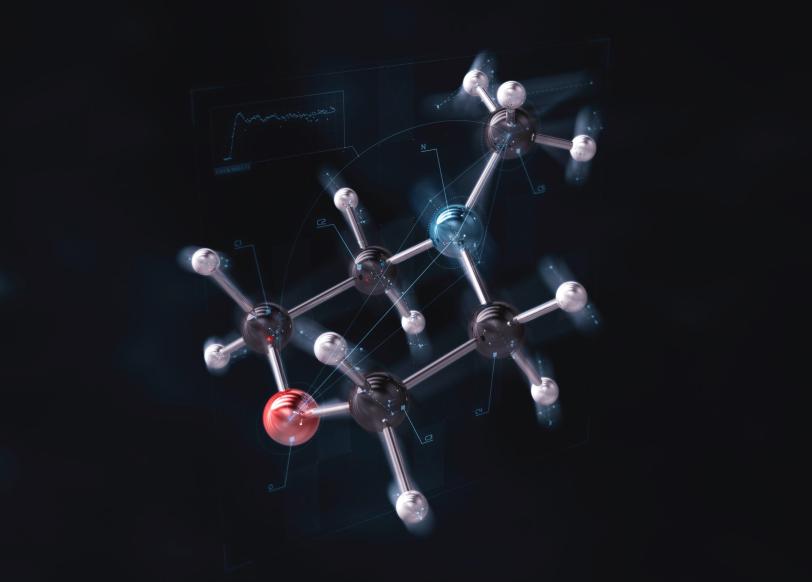Molecular movie pioneers awarded the Royal Society of Chemistry's new Horizon Prize
The Horizon Prizes celebrate the most exciting, contemporary chemical science at the cutting edge of research and innovation.
An international team of scientists from the Department of Energy’s SLAC National Accelerator Laboratory, the University of Edinburgh and Brown University has won the Royal Society of Chemistry’s new Faraday Division Horizon Prize for demonstrating that ultrafast X-ray scattering using X-ray free-electron lasers (XFELs) is a powerful and versatile technique to explore the transformation of matter during chemical reactions.
The technique, developed at SLAC’s Linac Coherent Light Source (LCLS), allows scientists to create molecular movies that determine the motion of atoms during a chemical reaction, track the structural changes in excited molecules and record the rearrangement of electrons when a molecule absorbs light – a process important in chemistry, physics, material science and biology.

The development of this powerful new tool will allow researchers to better control chemical reactions, improve the efficiency of solar energy harvesting, design light-driven machines and optimize the performance of catalysts.
“We have been excited about this science and the opportunities it brings for quite some time, and it is fantastic to see the broader community share in that excitement,” said collaborator Adam Kirrander, senior lecturer at the University of Edinburgh. “This particular prize is special as it allows the efforts of the entire team to be recognized.”
In announcing the award, Helen Pain, chief executive of the Royal Society of Chemistry, said, “The astonishing achievements of the team are simply inspirational, and it is our pleasure and honor to recognize this by presenting this much deserved prize. In an era defined by the pandemic, where the contribution of chemical scientists has never been more clear, this achievement is truly a cause for celebration.”
Royal Society of Chemistry prizes have recognized excellence in the chemical sciences for more than 150 years. More than 50 winners of these prizes have gone on to win Nobel Prizes for their pioneering work, including 2019 Nobel laureate John B. Goodenough.
Awarded for the first time this year, the society’s Horizon Prizes recognize teams or collaborations that are opening up new directions and possibilities in their field through ground-breaking scientific developments.
“It is a fantastic honor to receive the Horizon Prize from the Royal Society of Chemistry, which highlights very important scientific achievements while recognizing the importance of a close and collegial team,” said collaborator Peter Weber, a chemistry professor at Brown. “While the global pandemic has made everything more difficult, I am proud to say that with the help of distance communication tools, our collaboration is stronger than ever before.”
SLAC scientist and collaborator Mike Minitti added, “It takes a village of people to think about the experiment, model the experiment and execute the experiment, and what’s great about that is the expertise that others bring to help us visualize and interpret the reactions and create better and better predictive models. Farther down the line, we will be able to use more energetic X-rays that give us more information than ever before and provide new insight into the chemistry.”
LCLS is a DOE Office of Science user facility. Other SLAC members of the award winning team are Sébastien Boutet, Sergio Carbajo, Yiping Feng, James Glownia, Jerome Hastings, Jason Koglin, Michael Kozina, Thomas Lane, Henrik Lemke, Mengning Liang, Silke Nelson, Daniel Ratner, Joseph Robinson, Marcin Sikorski, and Diling Zhu. This article is based on a press release from the Royal Society of Chemistry, which contains the full list of winners. For more information about the RSC’s modern Prizes portfolio, visit rsc.li/prizes.
Contact
For questions or comments, contact the SLAC Office of Communications at communications@slac.stanford.edu.
SLAC is a vibrant multiprogram laboratory that explores how the universe works at the biggest, smallest and fastest scales and invents powerful tools used by scientists around the globe. With research spanning particle physics, astrophysics and cosmology, materials, chemistry, bio- and energy sciences and scientific computing, we help solve real-world problems and advance the interests of the nation.
SLAC is operated by Stanford University for the U.S. Department of Energy’s Office of Science. The Office of Science is the single largest supporter of basic research in the physical sciences in the United States and is working to address some of the most pressing challenges of our time.




